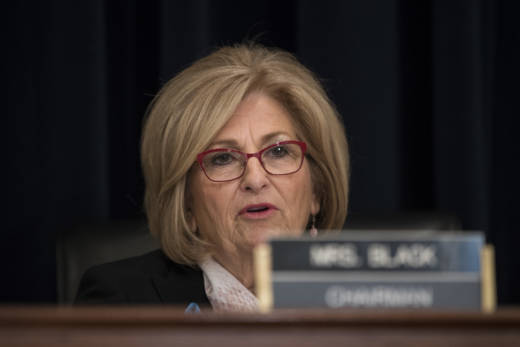House Republicans on Tuesday unveiled a budget that proposes trillions of dollars in cuts to the social safety net and other domestic programs while sharply boosting military spending, a blueprint that elicited criticism from conservatives and moderates.
The GOP plan, authored by House Budget Committee Chairwoman Diane Black, R-Tenn., is critical to GOP hopes to deliver on one of President Trump's top priorities — a Republican-only effort to overhaul the tax code. Unclear, however, is whether GOP leaders can get the budget measure through the House. Conservatives want a larger package of spending cuts to accompany this fall's tax overhaul bill, while moderates are concerned cuts to programs such as food stamps could go too far.
Black announced a committee vote for Wednesday, but action by the entire House could be delayed by the ongoing quarrel between the GOP's factions.
Medicare is the second-largest mandatory program after Social Security, and the House GOP plan again proposes to turn Medicare into a voucherlike program in which future retirees would receive a fixed benefit to purchase health insurance on the open market. Republicans have proposed the idea each year since taking back the House in 2011, but they've never tried to implement it — and that's not going to change now, even with a Republican as president. Trump opposes the idea.
The plan, in theory at least, promises to balance the budget through unprecedented and politically unworkable cuts across the budget. It calls for turning this year's projected $700 billion or so deficit into a tiny $9 billion surplus by 2027. It would do so by slashing $5.4 trillion over the coming decade, including almost $500 billion from Medicare, $1.5 trillion from Medicaid and the Obama health law, along with sweeping cuts to benefits such as federal employee pensions, food stamps, and tax credits for the working poor.
There’s too much wasteful spending in Washington. Our #budget calls for serious reforms to get 🇺🇸back on the right fiscal path. pic.twitter.com/gSLeOcbiPr
— Diane Black (@RepDianeBlack) July 18, 2017
"The status quo is unsustainable. A mounting national debt and lackluster economic growth will limit opportunity for people all across the country," Black said. "But we don't have to accept this reality. We can move forward with an optimistic vision for the future, and this budget is the first step in that process. This is the moment to get real results for the American people. The time for talking is over. Now is the time for action."

